
|
Have you ever wondered how your freelancers feel about working with you? We asked hundreds of freelancers to share their perspectives to help you better manage your outsourced work and improve those relationships. We also gathered tips from experienced employers about how to hire and maintain top freelance talent.
First, we asked workers to share their reasons for freelancing and their methods for maintaining good relationships with clients. They also shared what they'd appreciate in return.
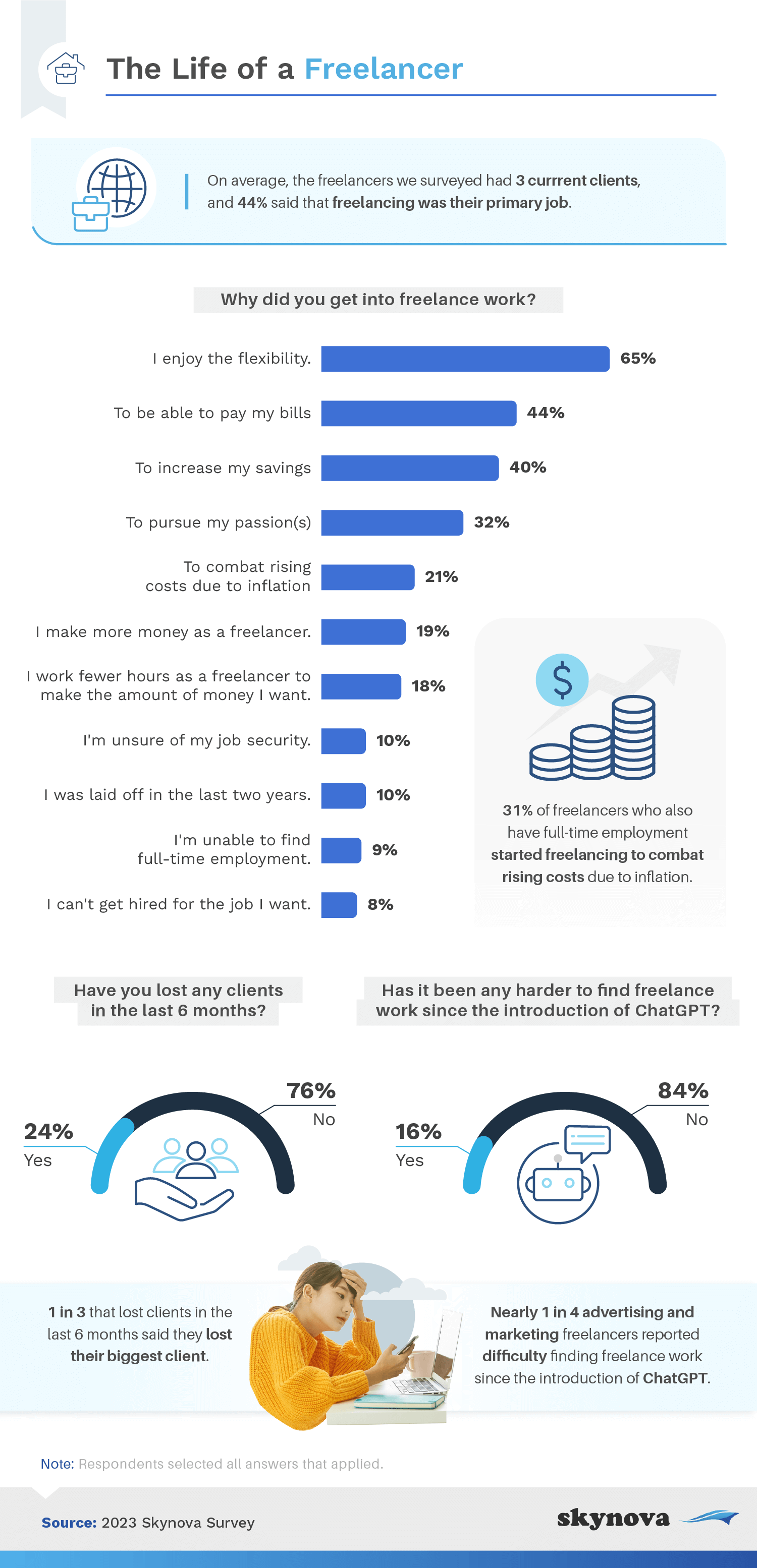
Freelancers tend to have more on their plates than just the work you give them. More than half said they freelance on top of another job, whether that other job was full-time (39%) or part-time (17%). The remaining 44% said all their work was freelance. They also reported having an average of three clients at a time.
Dealing with this many clients makes communication an essential skill. To keep those relationships healthy, some freelancers have made sure to:
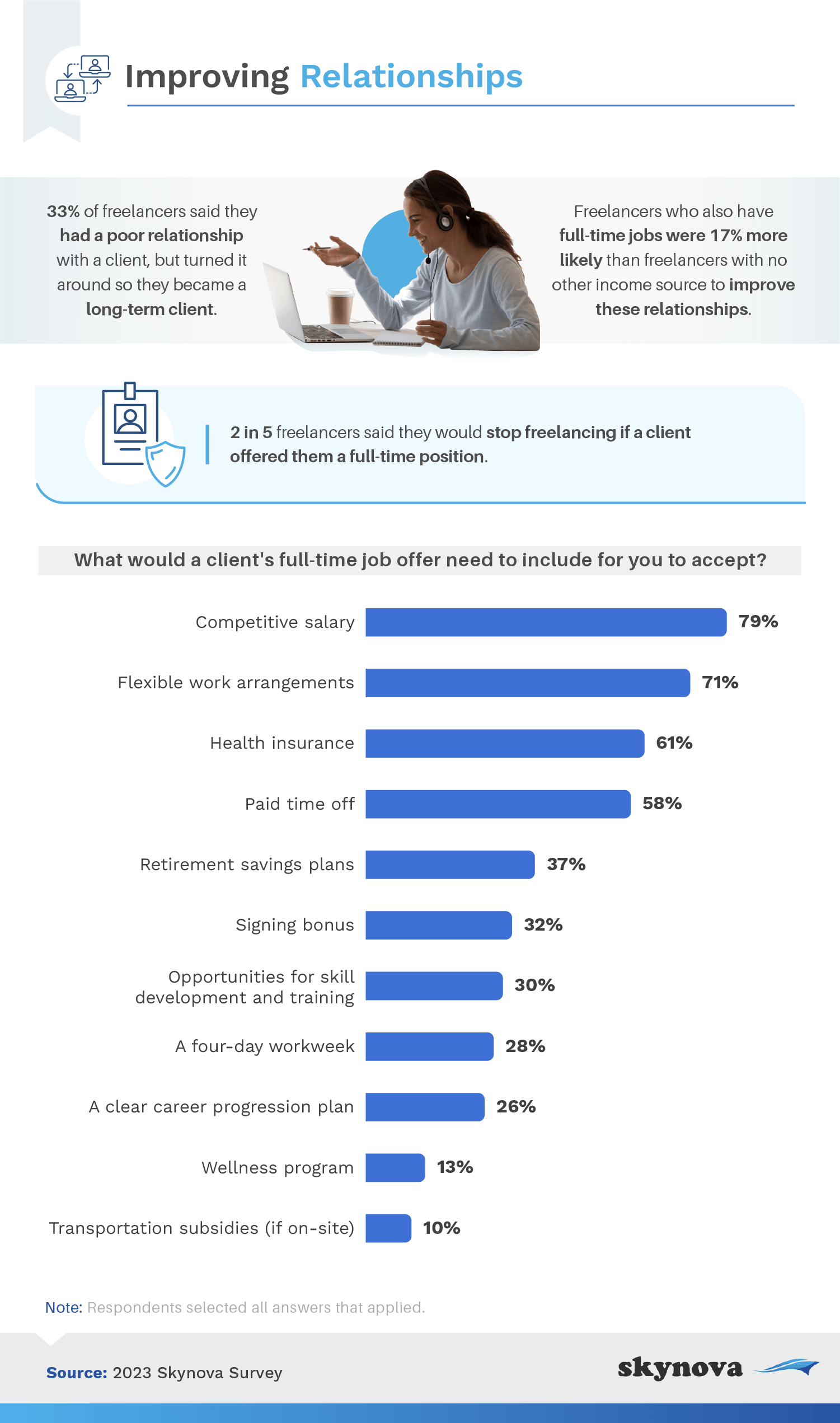
If a freelancer and client work well together, they might consider a more permanent arrangement. According to the freelancers we surveyed, 2 in 5 would stop freelancing in favor of a full-time position — especially if offered a competitive salary (79%) and flexible work arrangements (71%). But these aren't the only ways to win freelancers over and build a good working relationship.
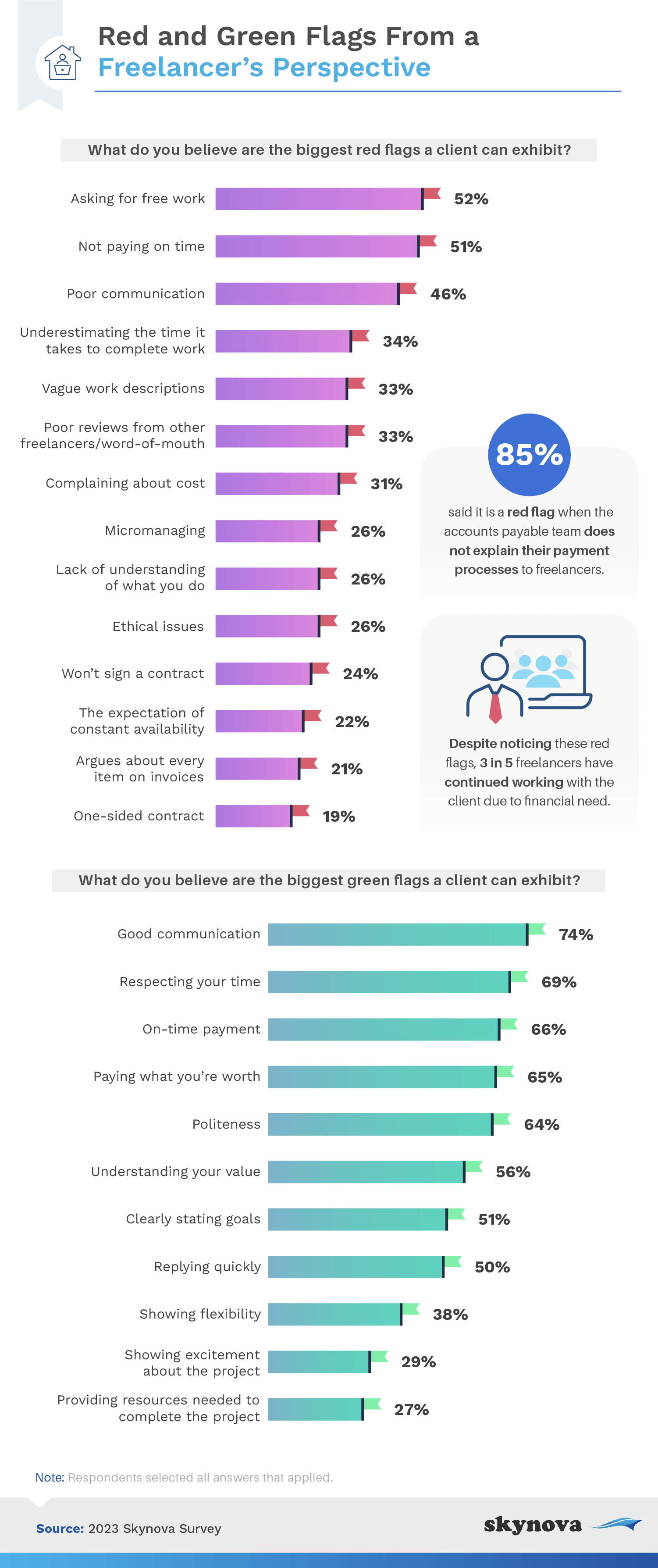
You may find that respecting freelancers' time is the best place to start. The top two red flags freelancers shared were being asked to work for free (52%) and not being paid on time (51%), with the latter being a big concern among millennials. Paying them the amount they request is also important since more than 1 in 5 freelancers said a client's top red flag is arguing over every item on an invoice. Similarly, it helps to ensure freelancers understand your payment process; 85% said it's a red flag when an accounts payable team doesn't clearly explain it to them.
Being sensitive to freelancers' income and job security concerns can also help. High inflation rates in the U.S. are why 21% of our respondents got into freelance work in the first place.
We also found that nearly 1 in 4 working in advertising and marketing have struggled to find freelance work since the introduction of the AI chatbot, ChatGPT. Since the spread of AI could impact media jobs due to its ability to interpret data and write content, this could be a growing concern among these freelancers. However, a human touch is also necessary for these roles, and letting freelancers know you understand their value could strengthen your relationship.
Next, we asked employers and business owners about their plans for hiring freelancers in 2023 and their tips for maintaining good client/freelancer relationships.
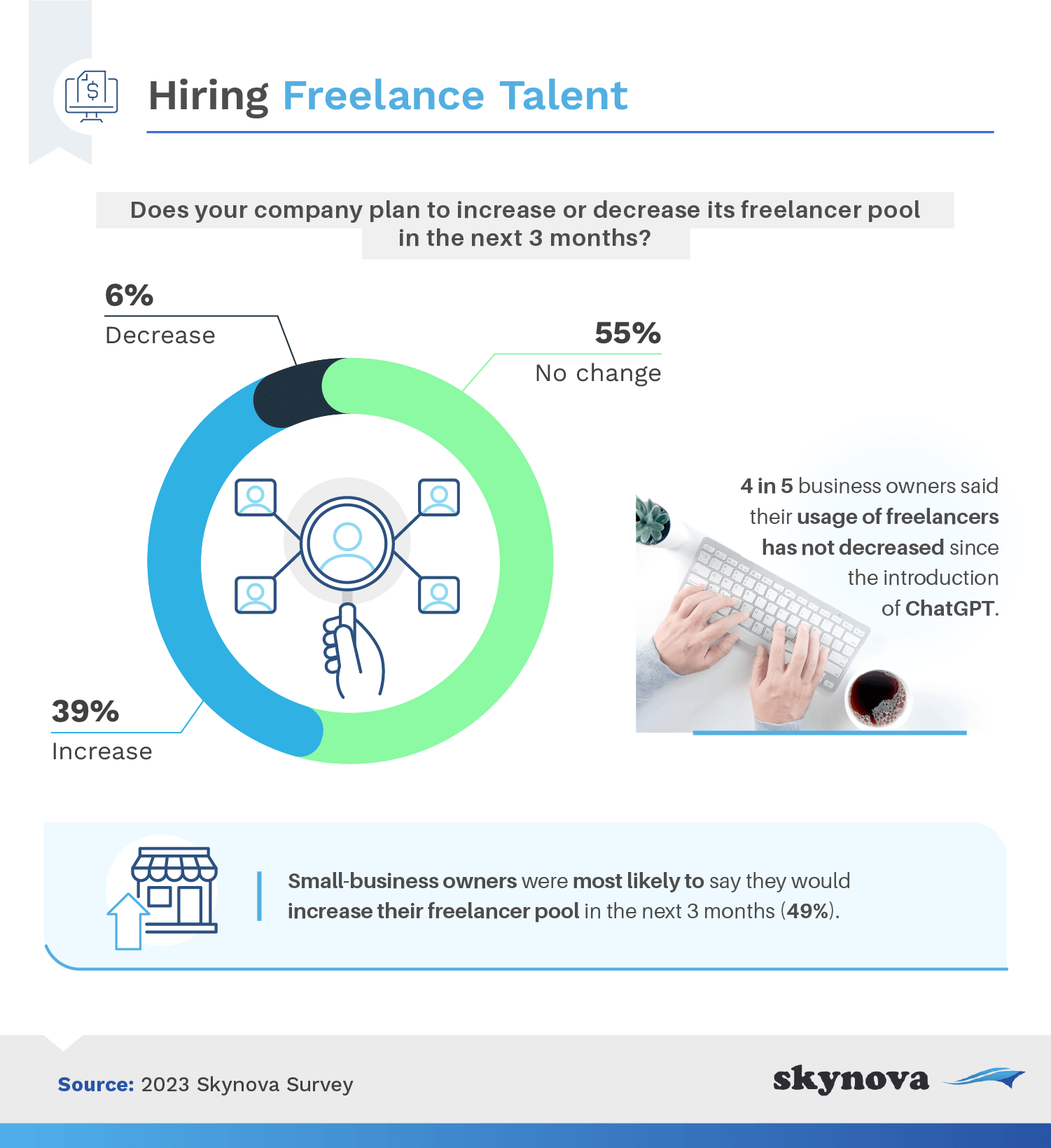
Hiring freelancers can be just as helpful as cultivating solid in-house teams. That's because freelancers offer specialized skills while often saving you overhead costs. This could be why 39% of the employers we surveyed said they plan to increase their freelancer pool in the next three months.
And as we've pointed out, those relationships can turn into full-time jobs down the line. Employers shared that the best ways for freelancers to join the company full-time are:
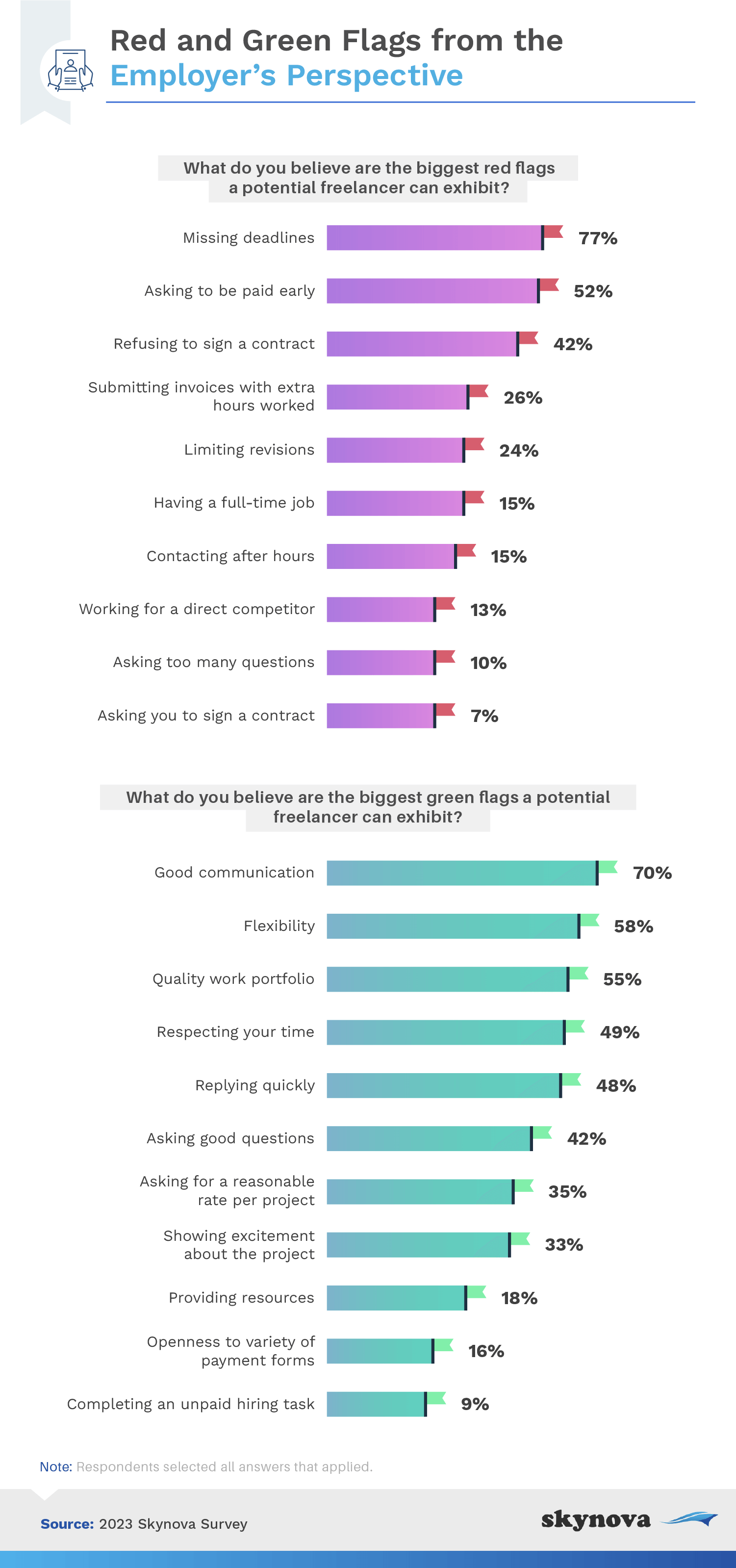
Whether or not they want to go full-time, freelancers will want to avoid some common pitfalls. Employers said the top red flags they look out for when working with freelancers are:
Another glaring issue among freelancers (according to over 1 in 4 employers) was adding extra work hours to an invoice.
On the positive side, employers shared these top green flags they appreciate seeing from freelancers:
Attitude can also go a long way in a client/freelancer relationship. One-third of employers said they appreciate it when freelancers seem excited about a project (33%), and this was especially true among small-business owners (36%).
When it comes to work relationships, freelancers and employers have different perspectives and appreciate different things. A freelancer's main concern is often being asked to work for less than they're worth, while that of an employer is most likely the timeliness of work submissions. But these issues have one thing in common: mutual respect. Respecting one another's time can go a long way in maintaining healthy professional relationships, no matter which side of the job you're on.
Staying on top of invoices and paying workers on time should be an easy way to keep them happy. Lucky for you, Skynova makes that possible with invoice templates and other solutions for keeping your business running efficiently.
To explore the red flags of freelancing, we surveyed 615 freelancers and 405 employers who have hired freelancers. Some answers were taken from a separate survey of 581 additional freelancers.
If you'd like to share these tips with any employers or freelancers who might find them useful, please feel free to do so. We encourage you to use our findings for any non-commercial purpose as long as you include a link to this page.